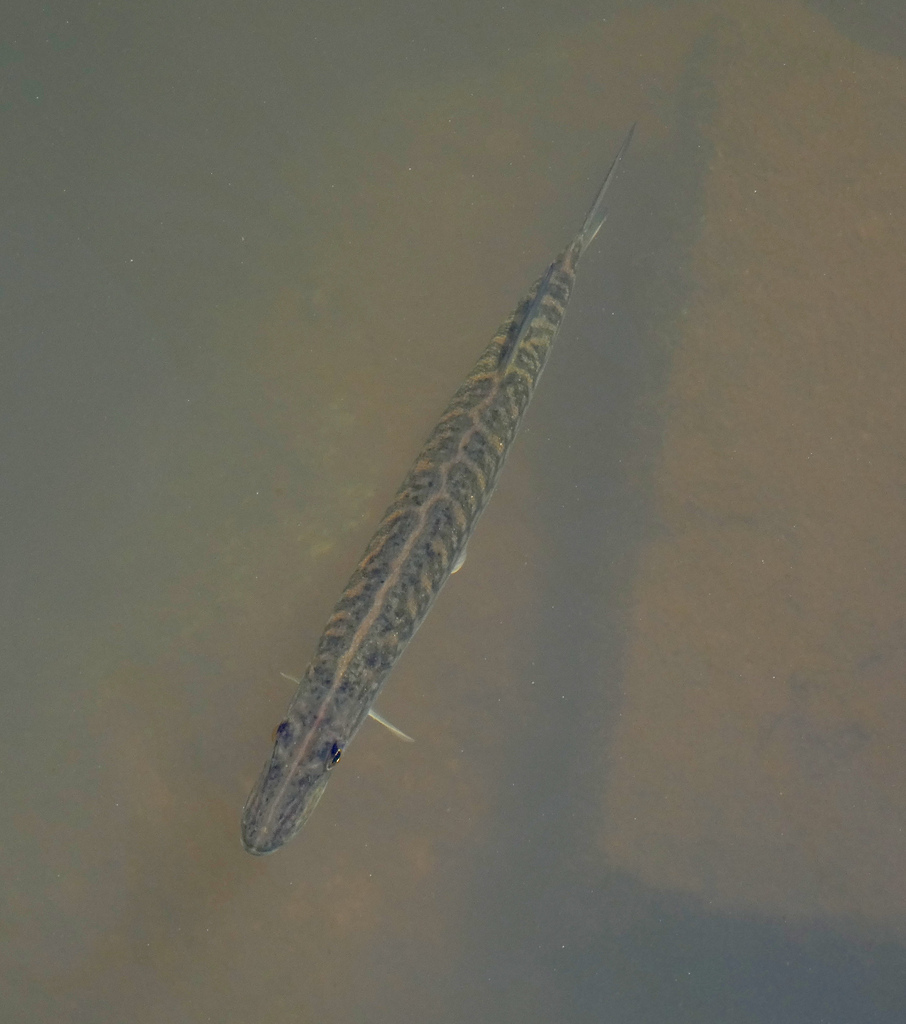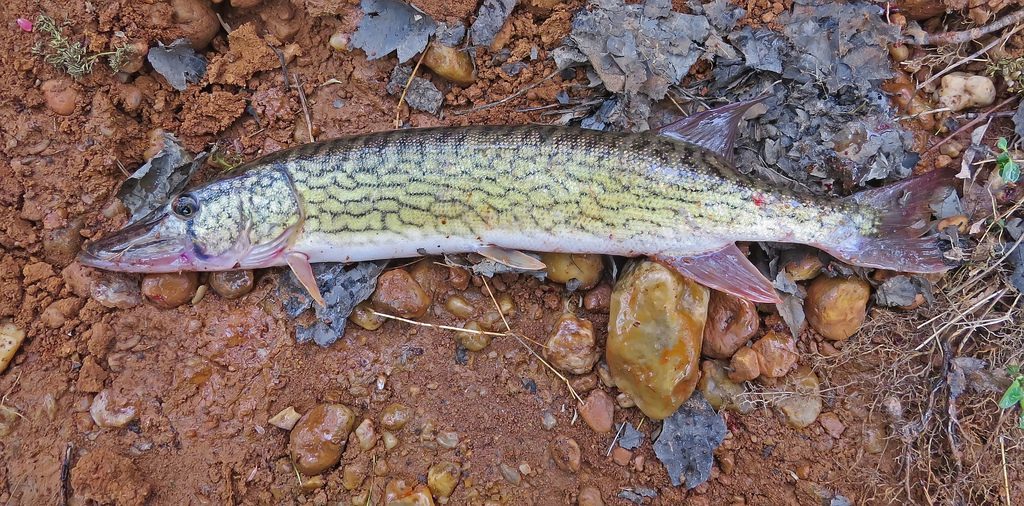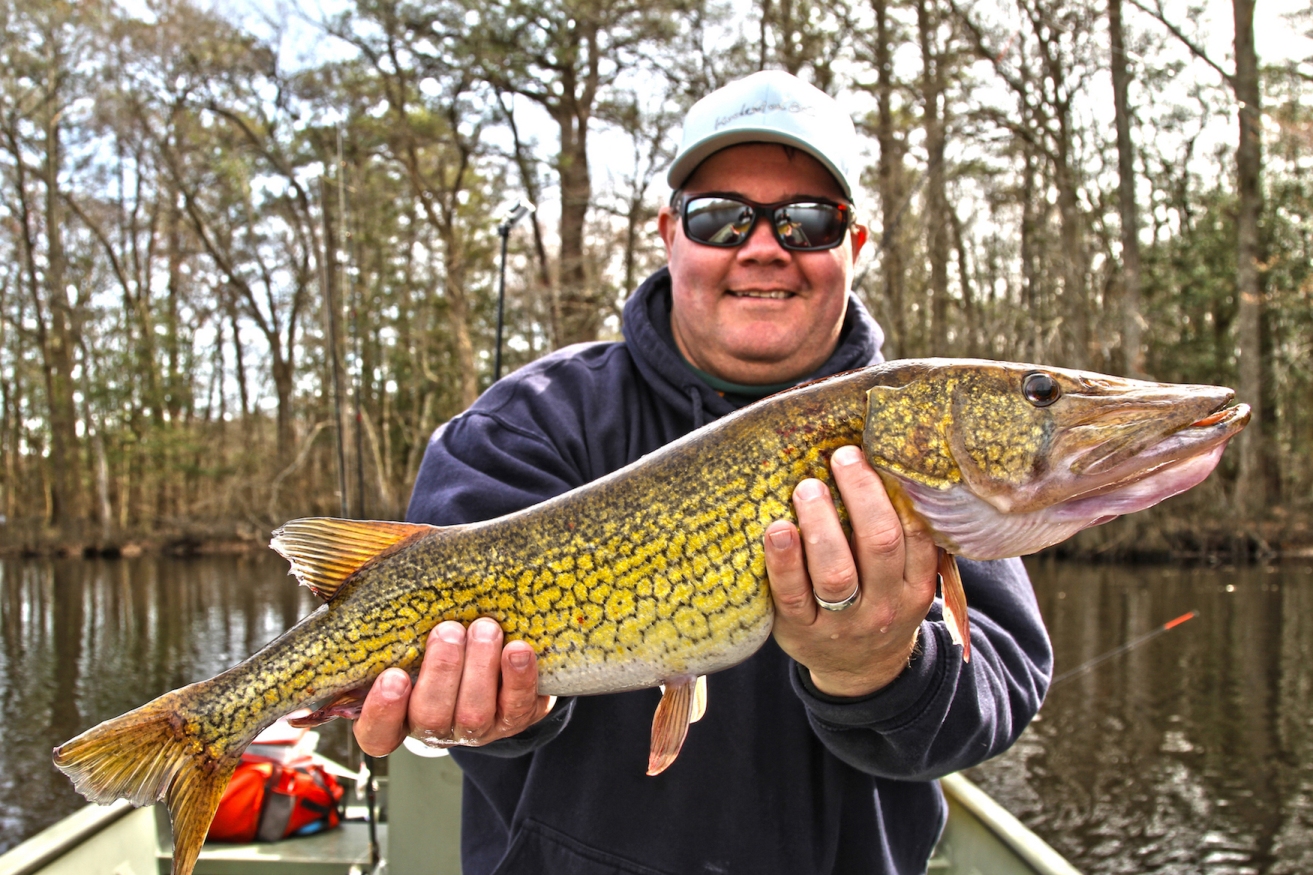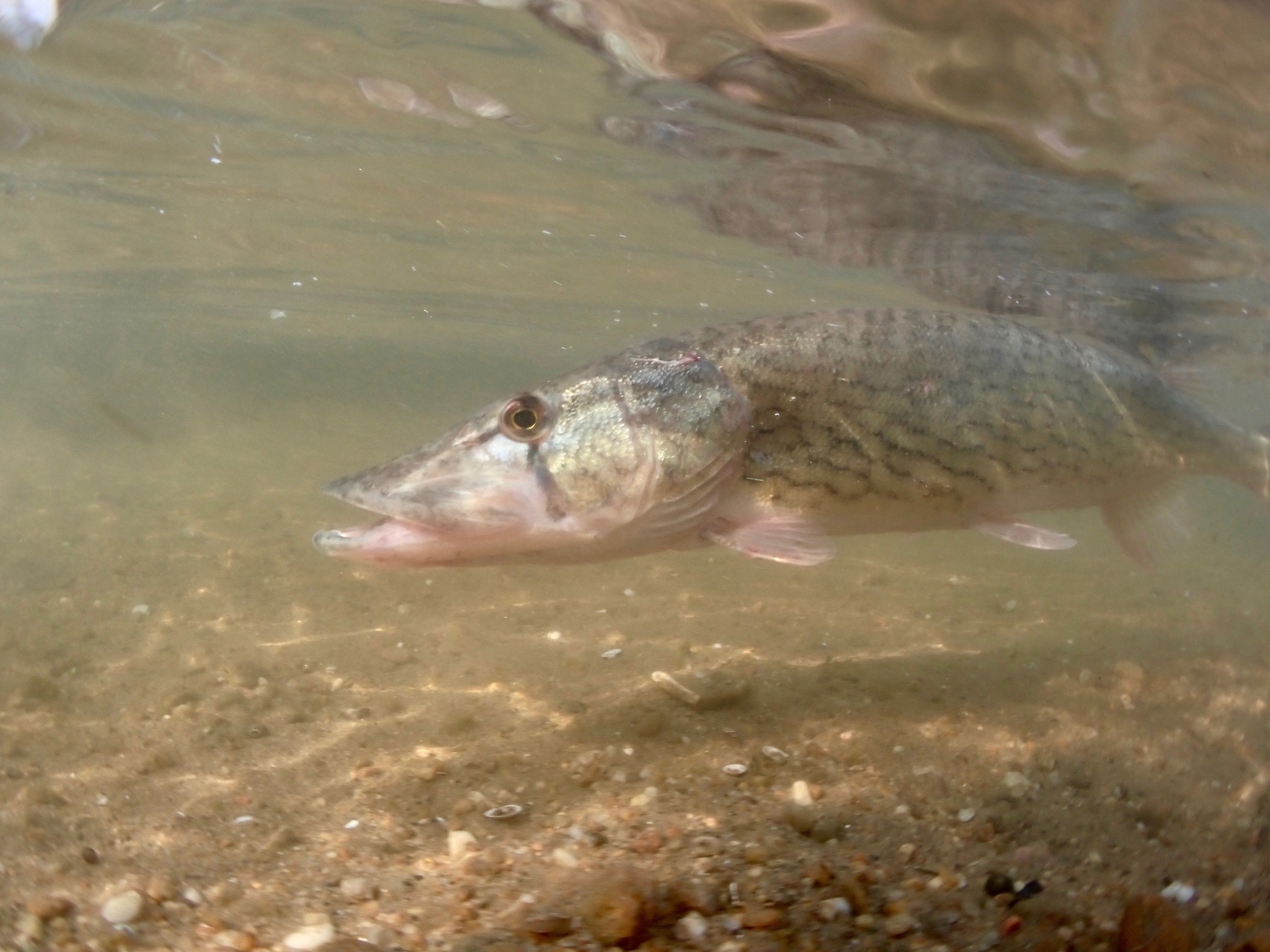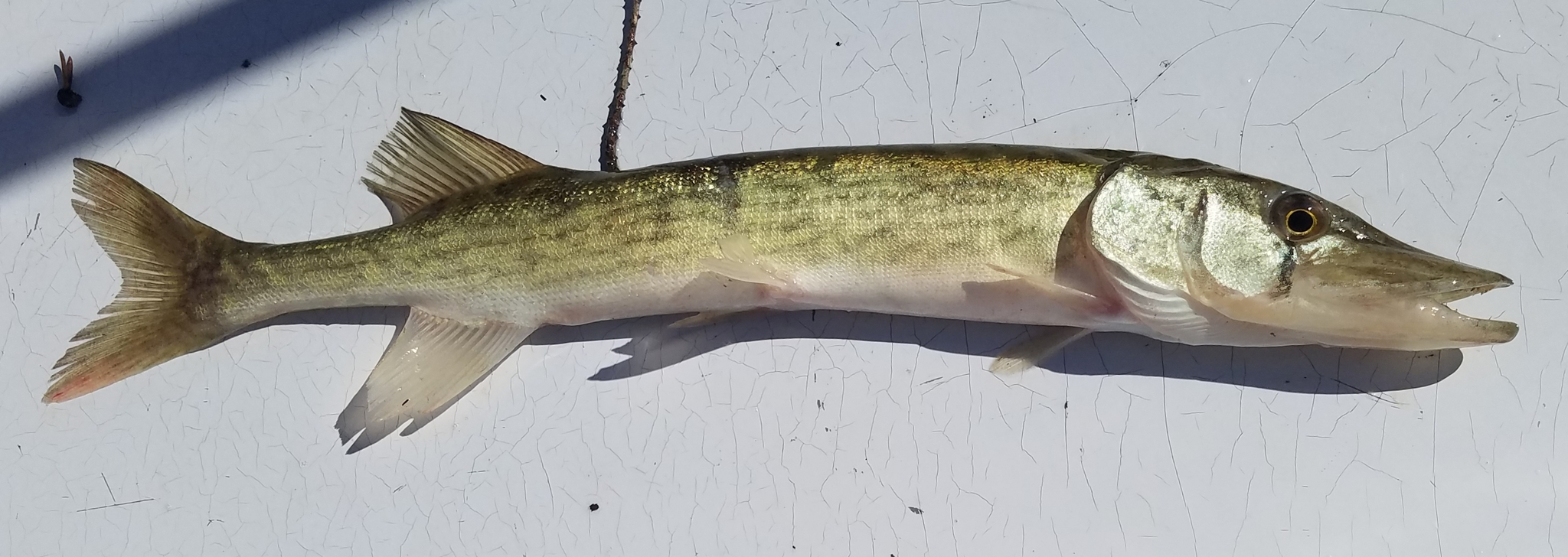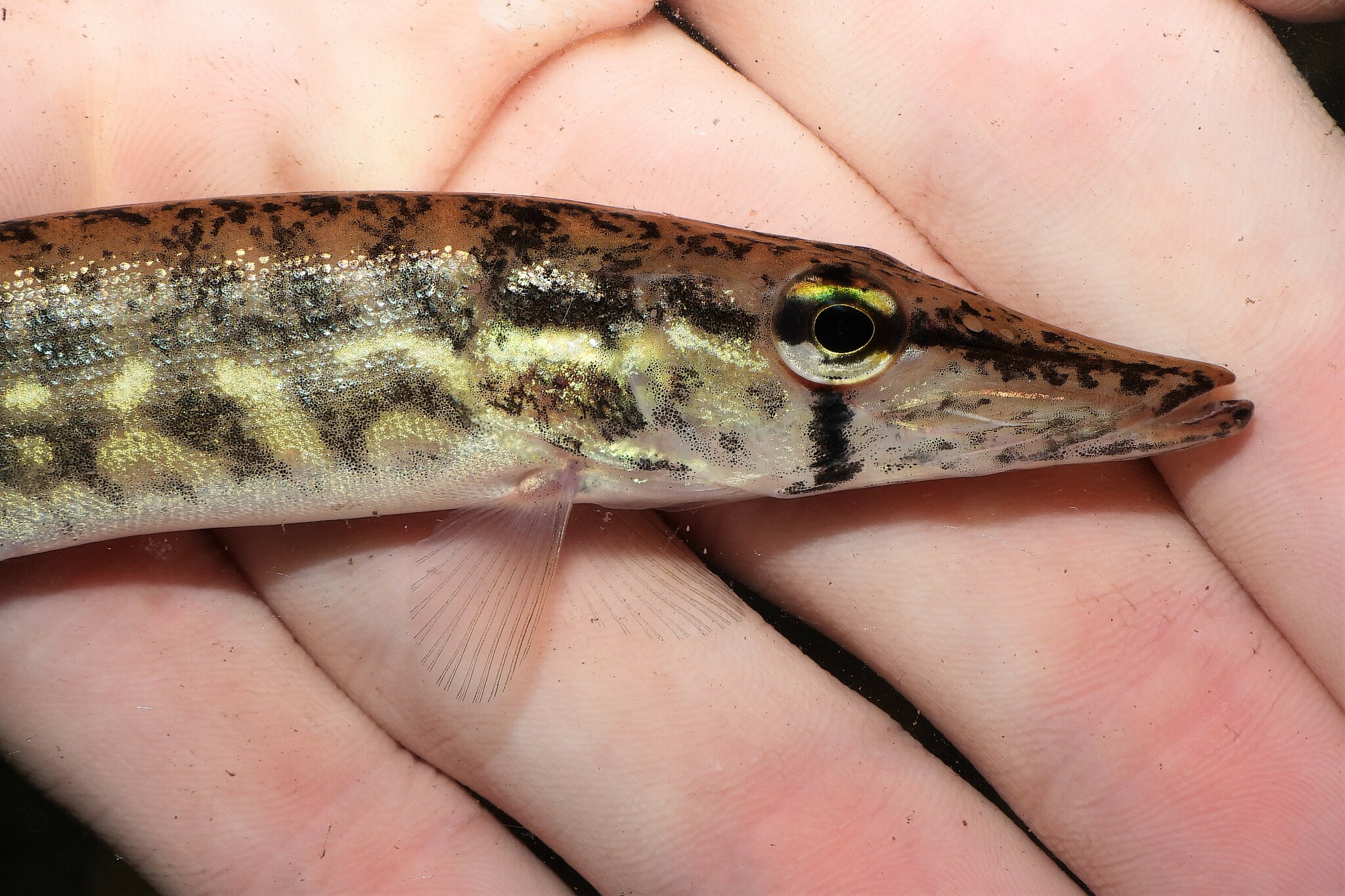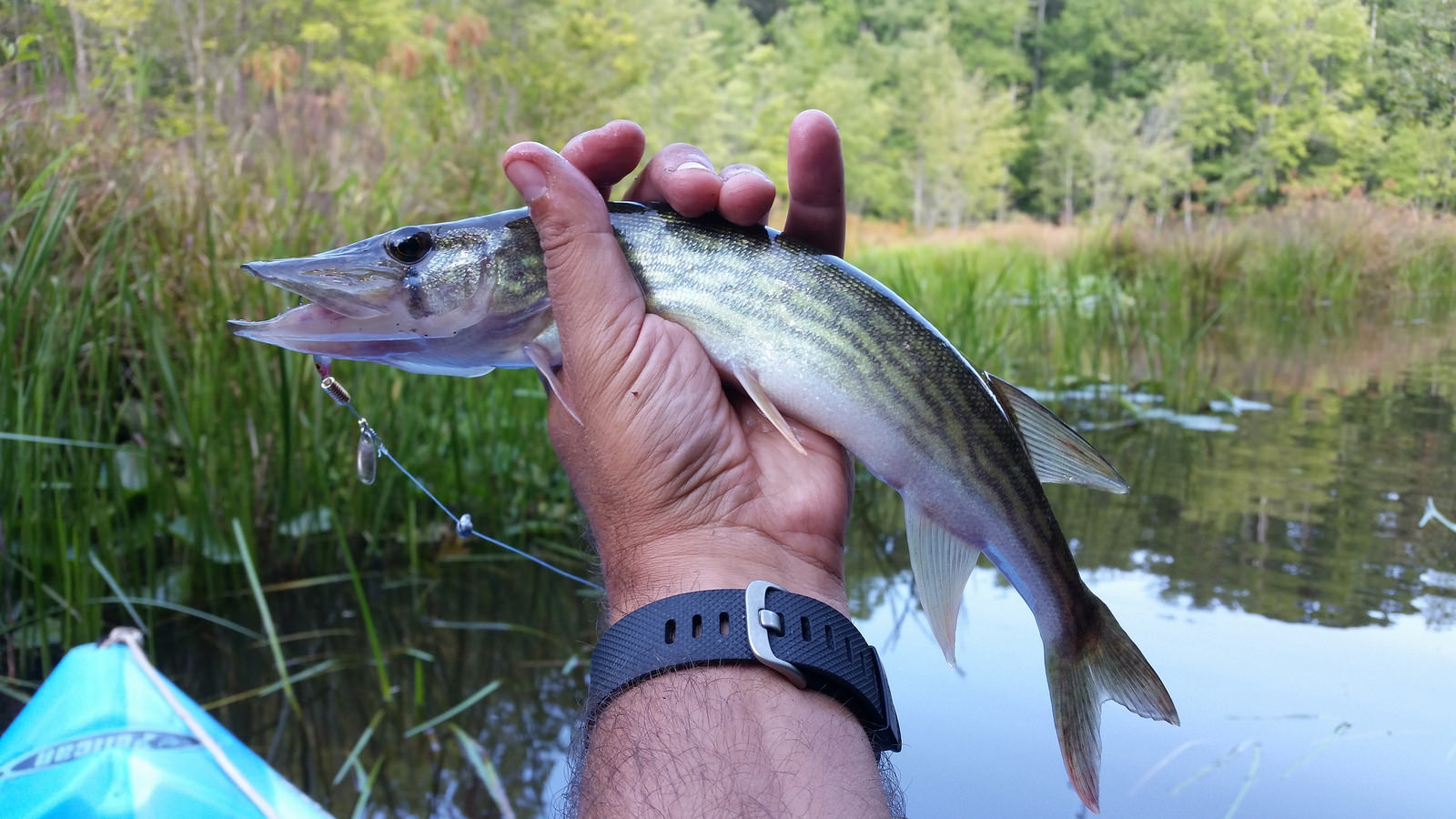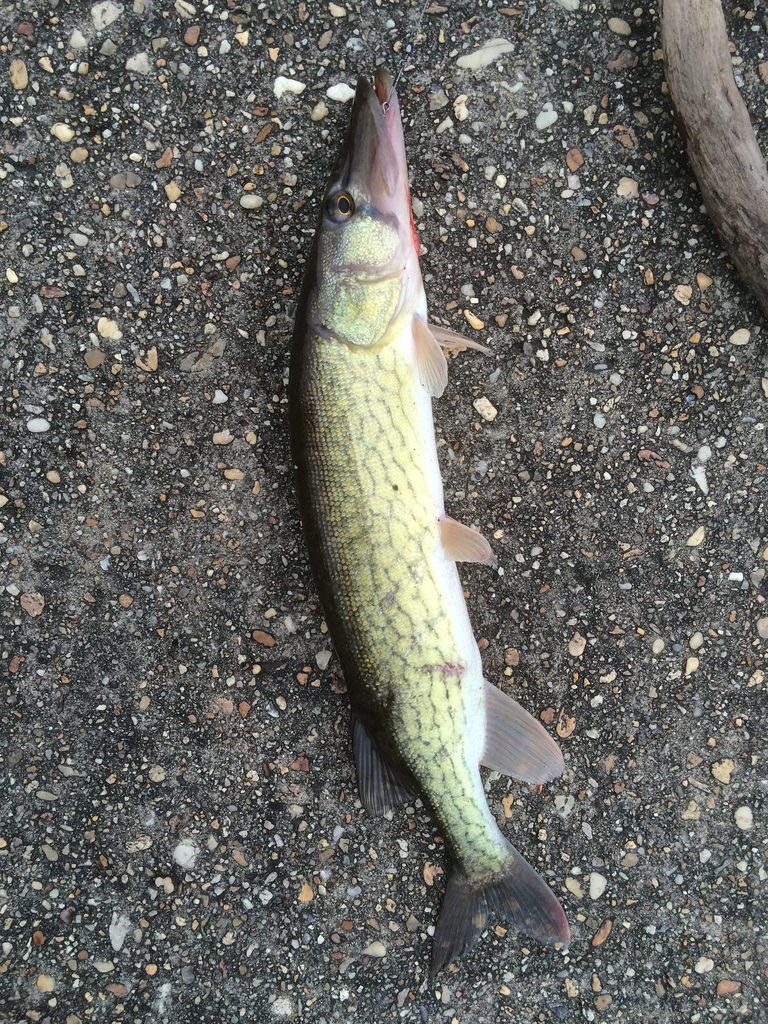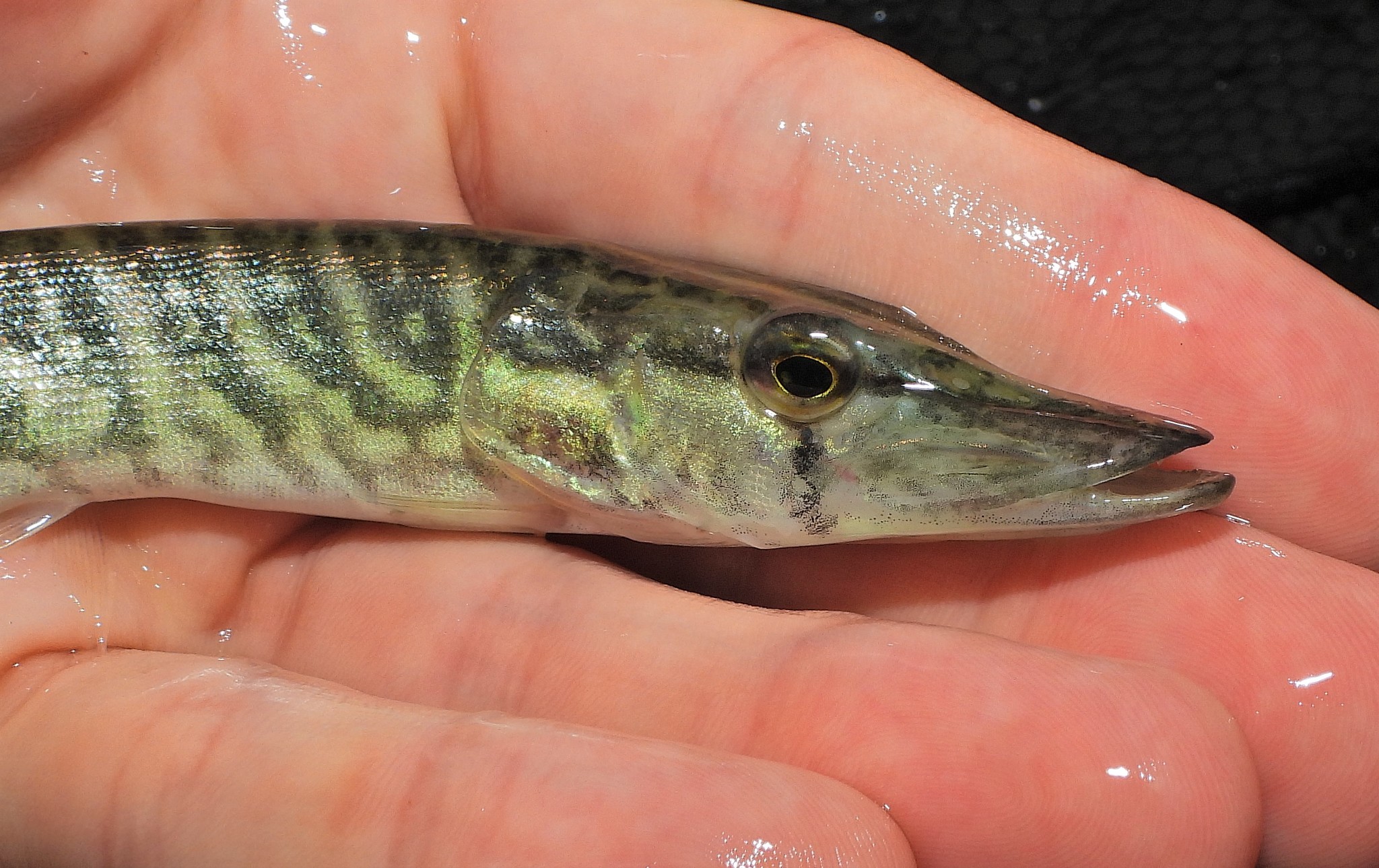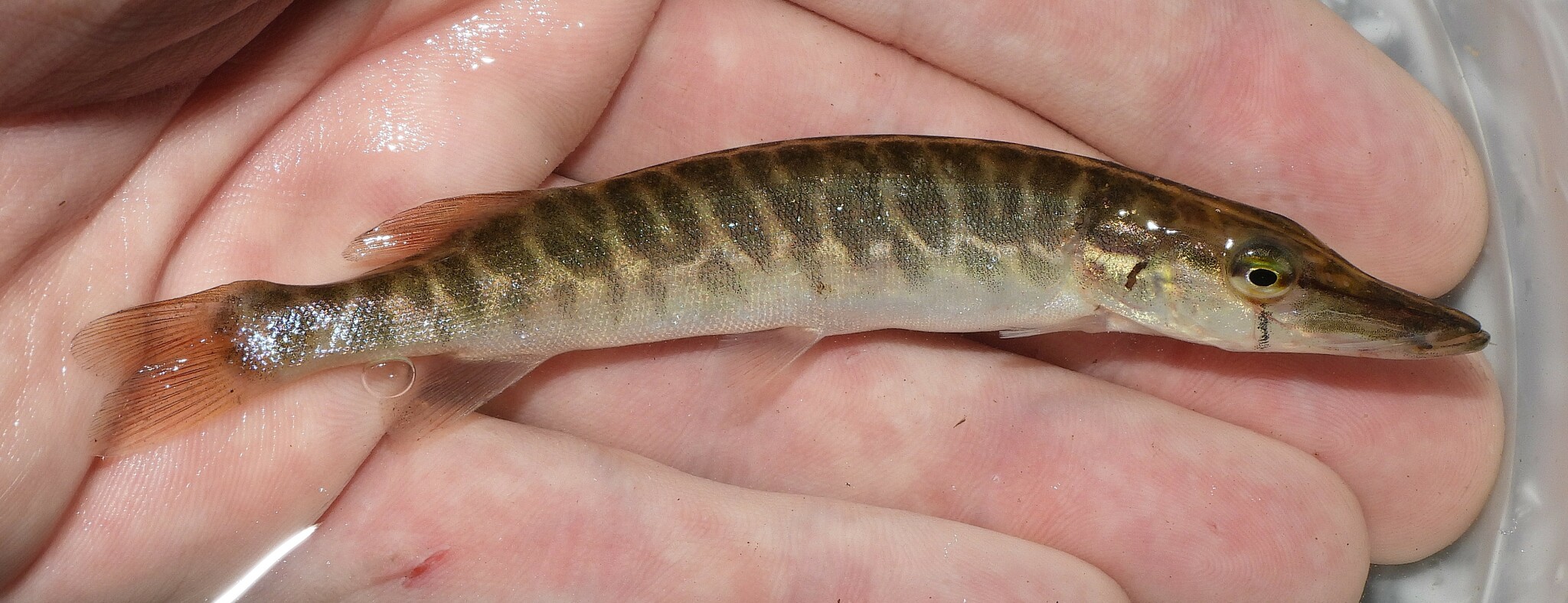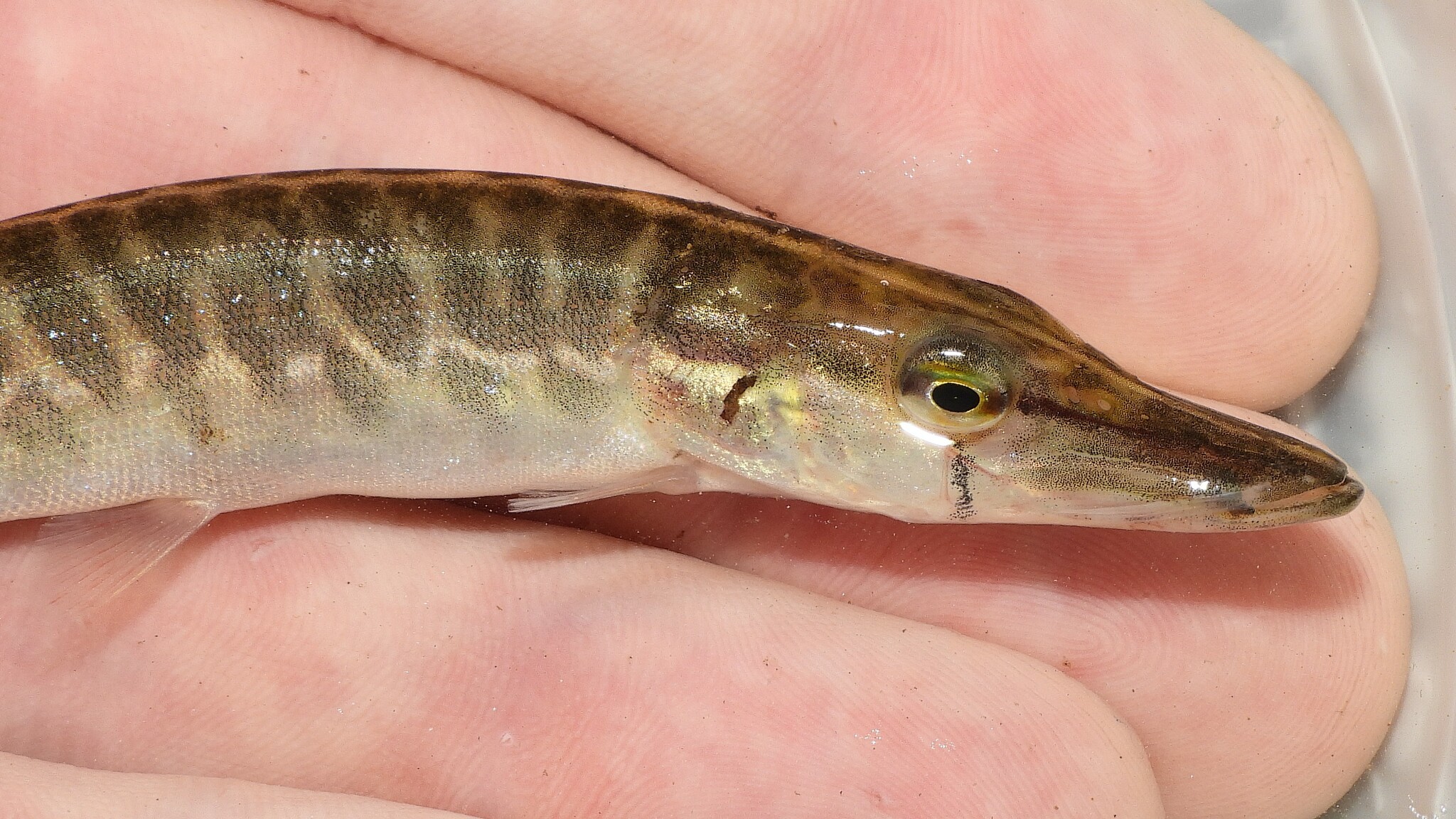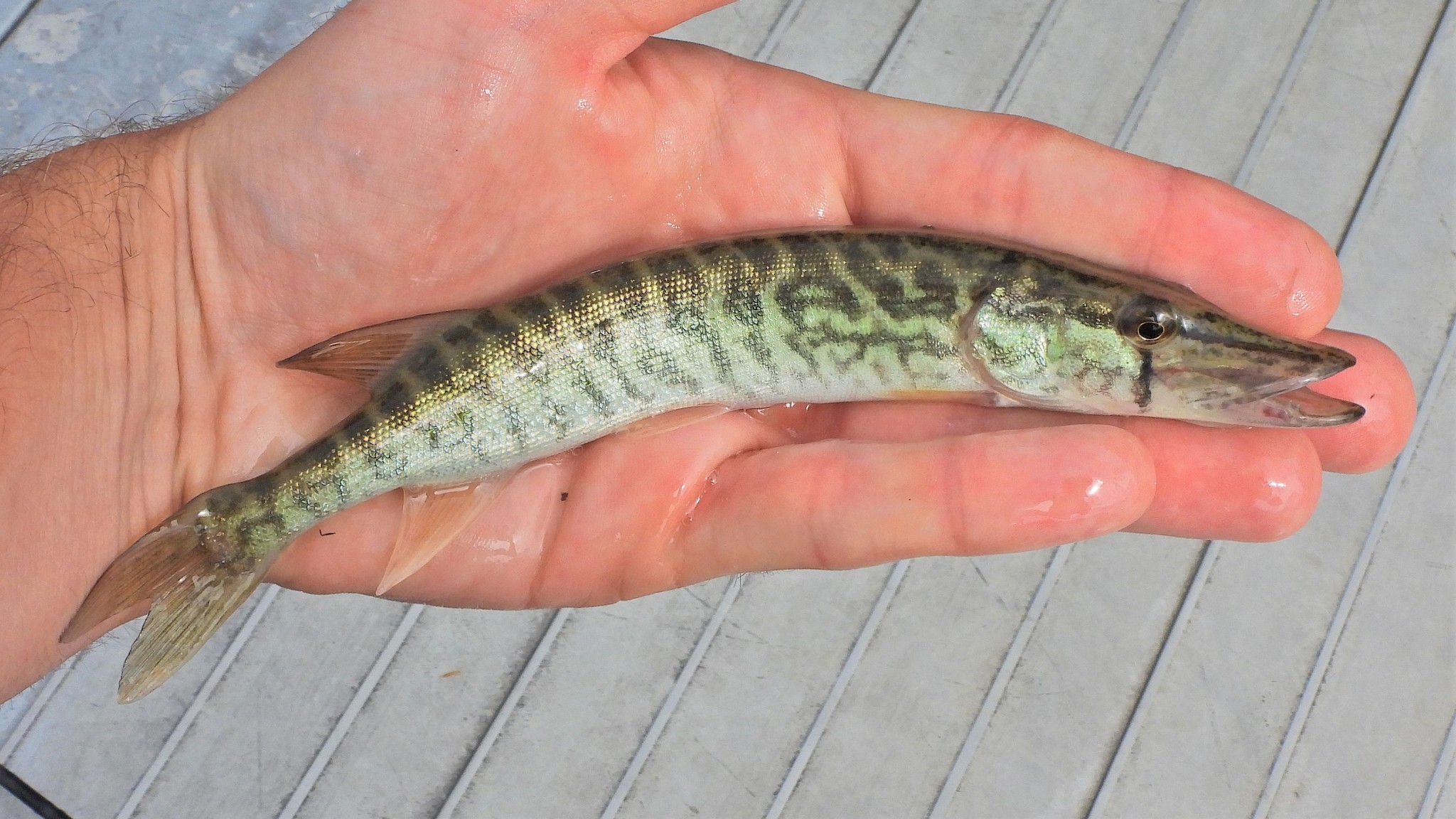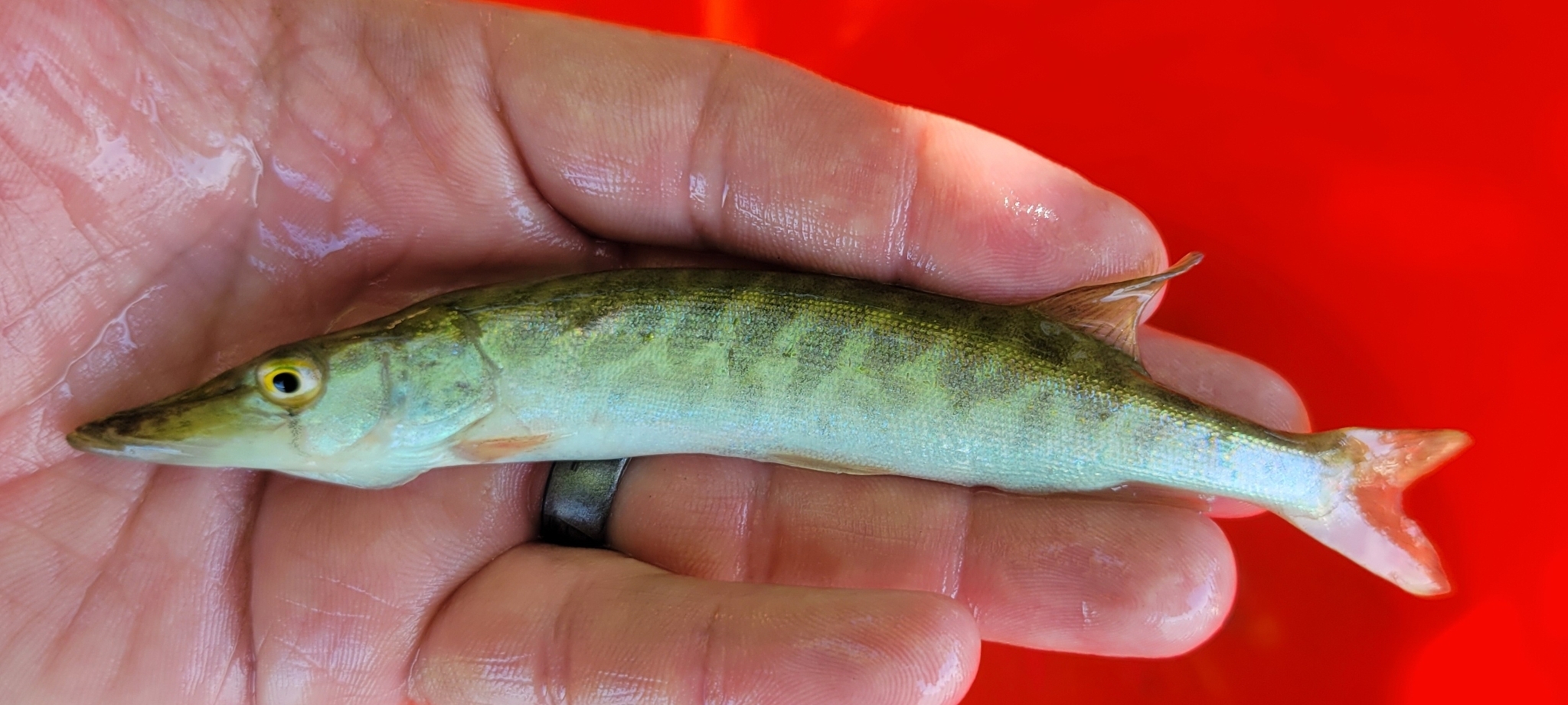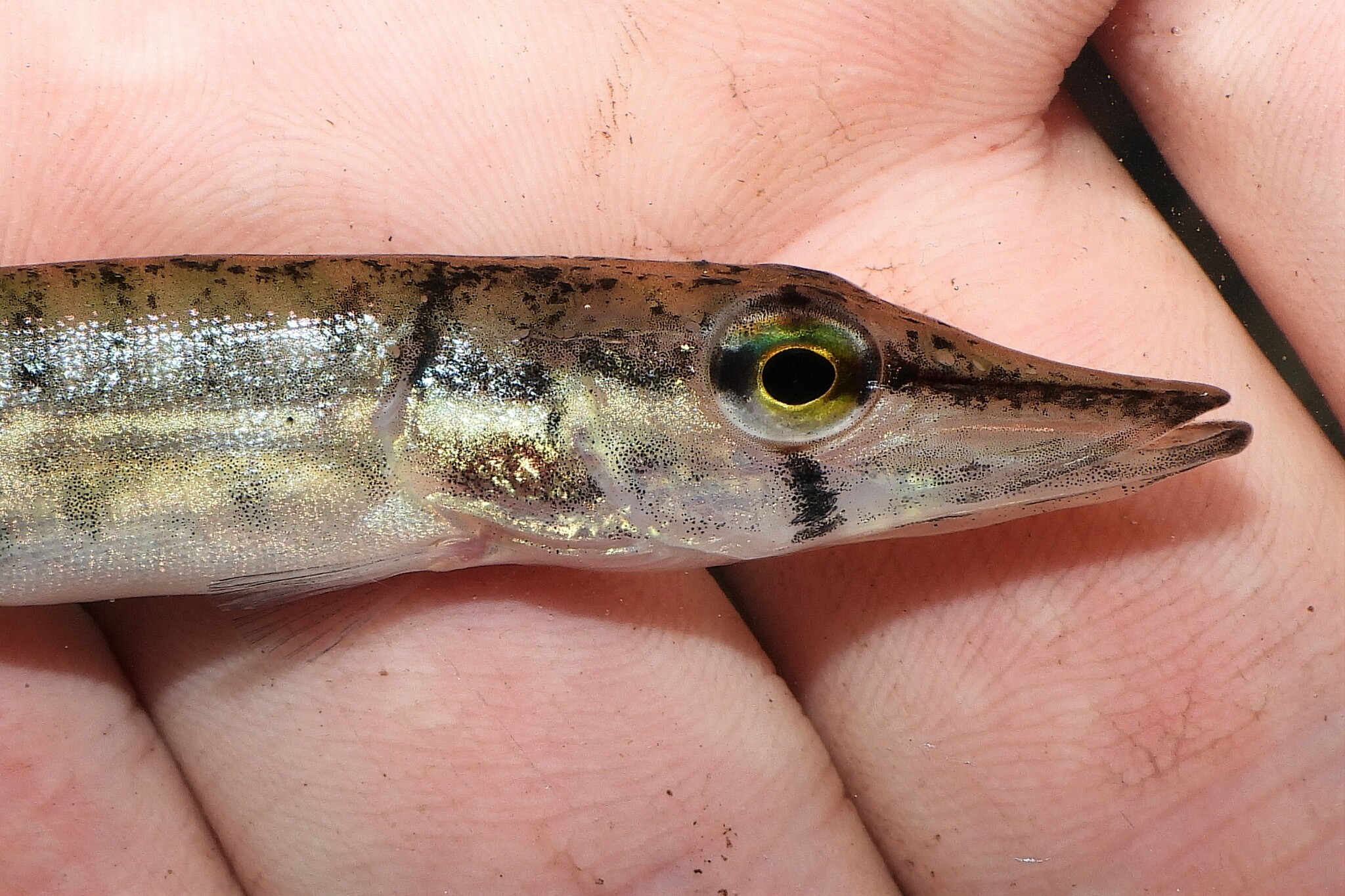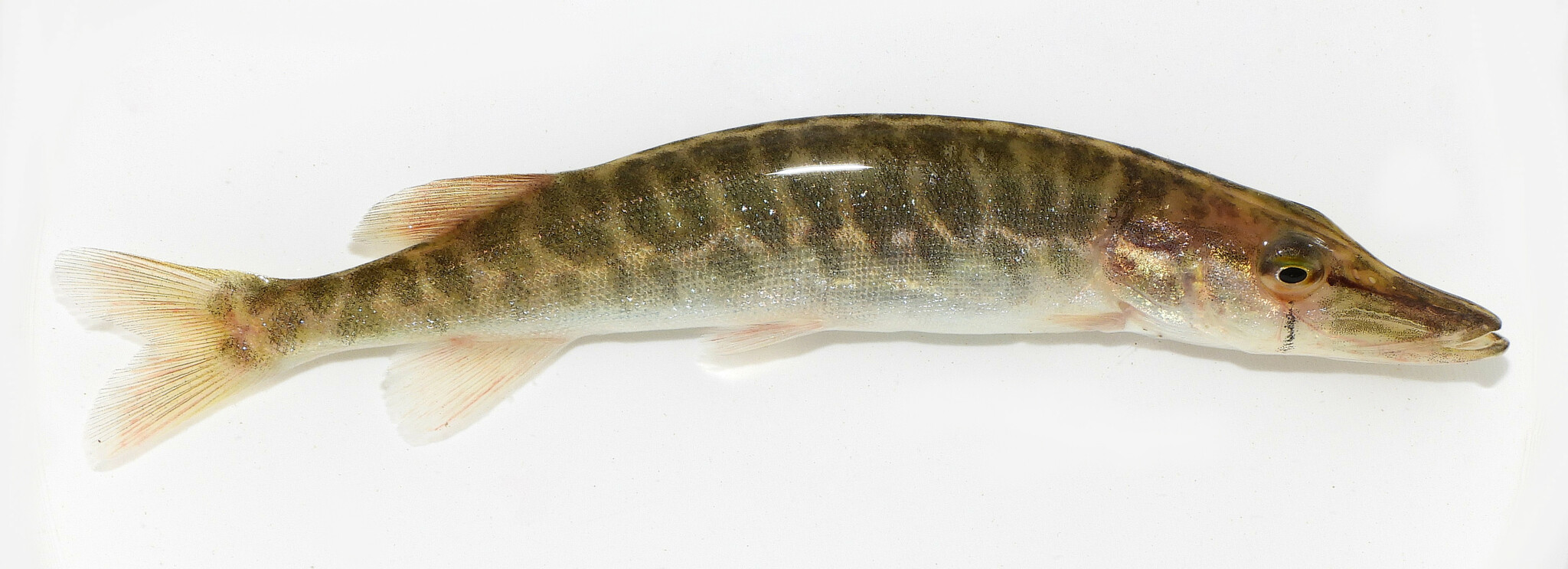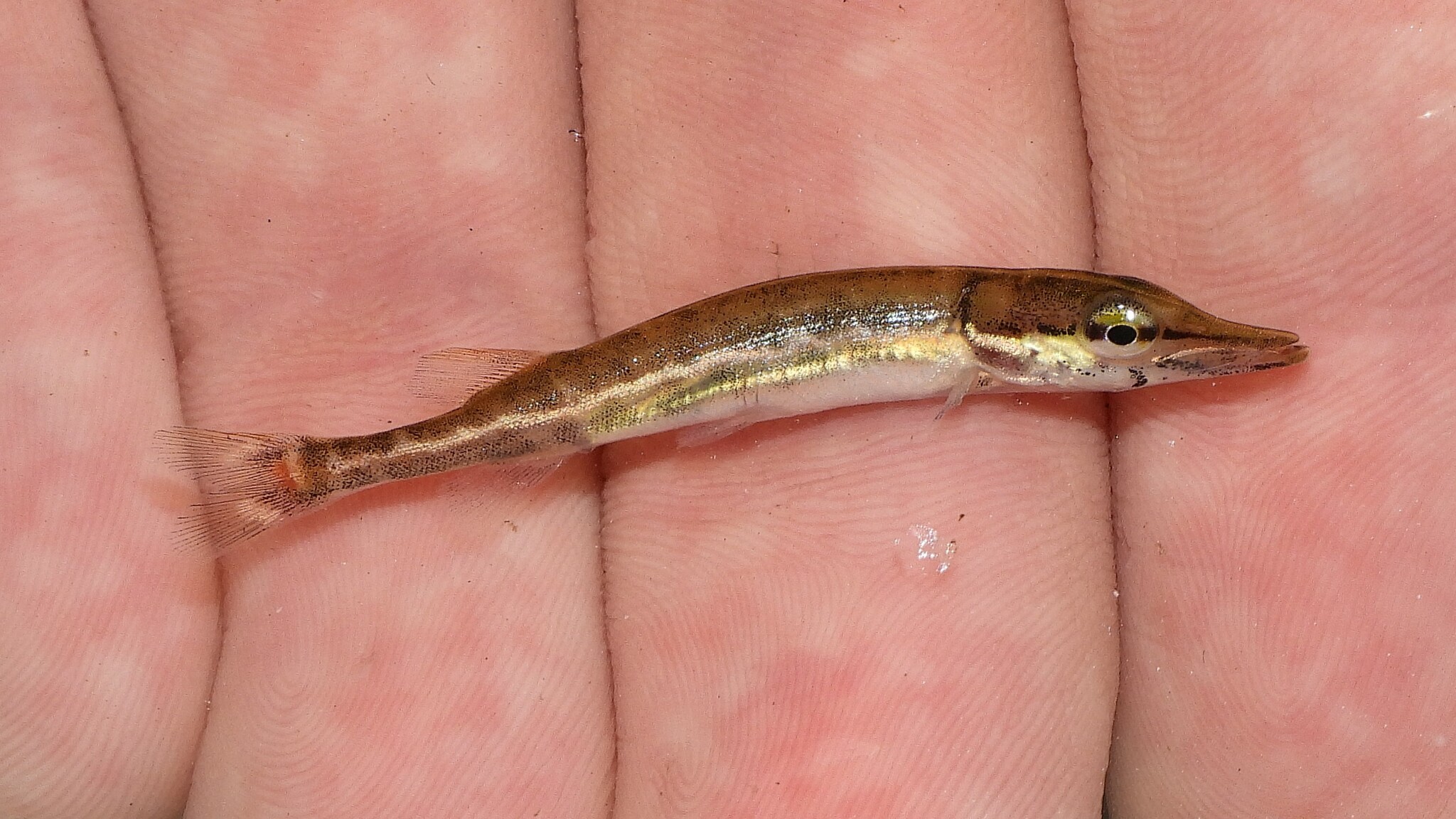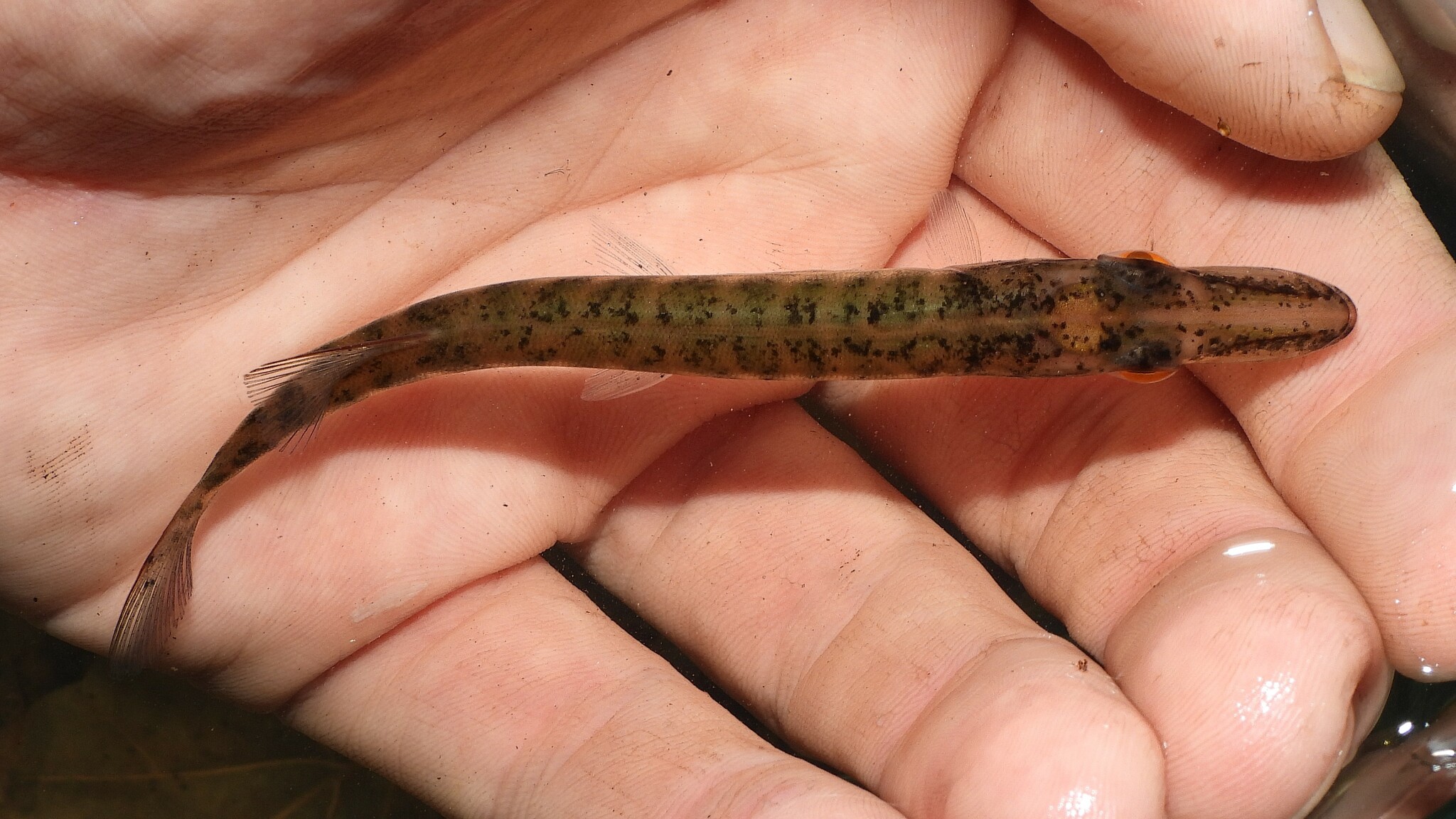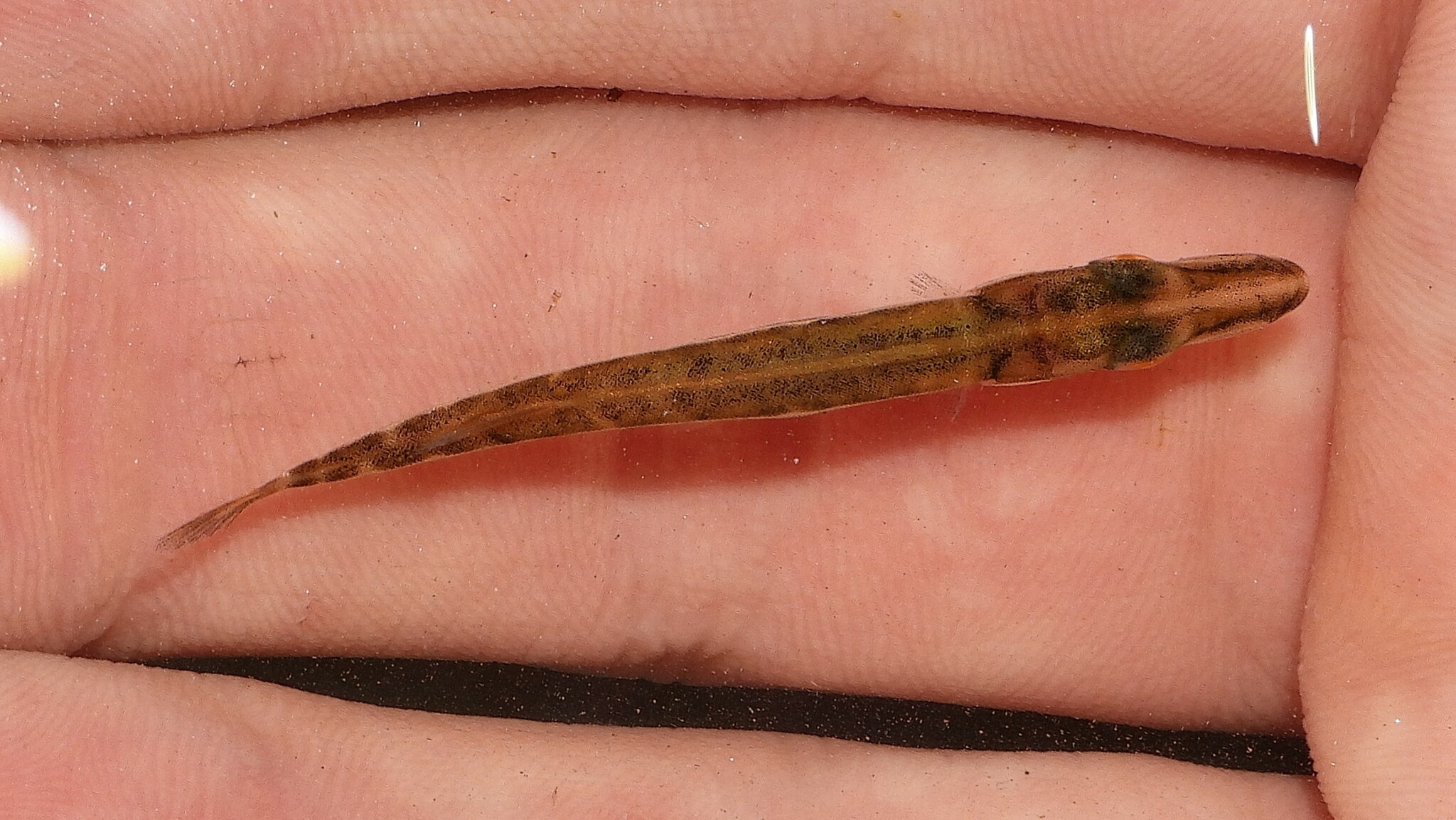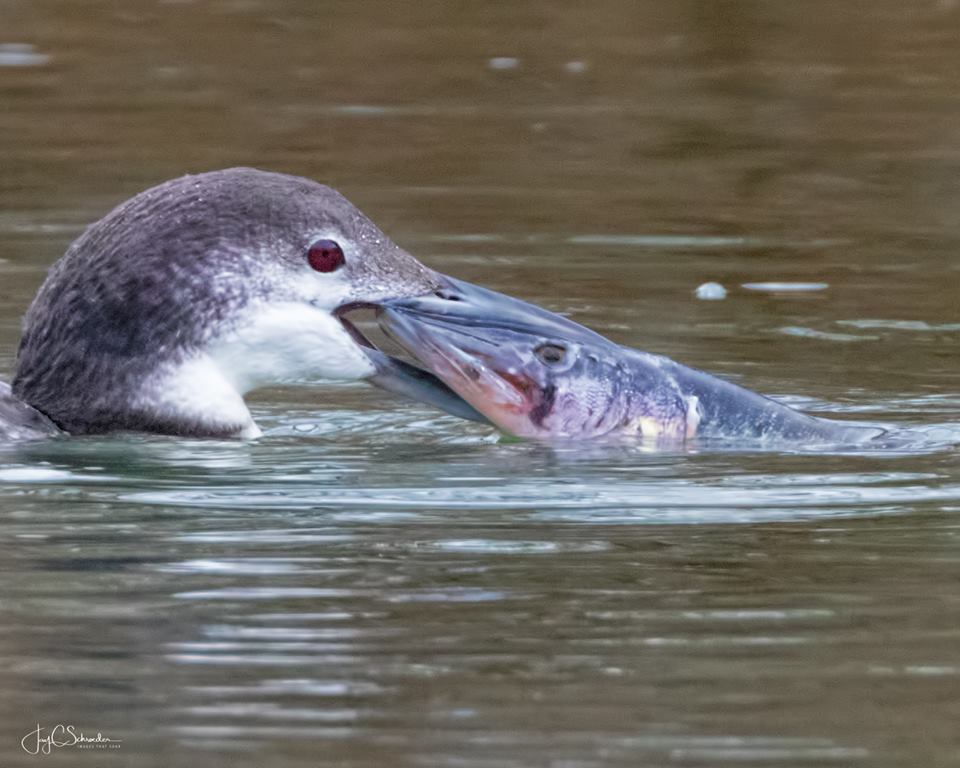Map Snapshot


















134 Records
Status
Chain Pickerel are widespread in Maryland in freshwater impoundments and tributaries of the Chesapeake Bay watershed. They have been widely introduced throughout their range. The species should be expected in all Maryland counties, but MBP still needs county records for about half the counties (and of course most quads). Please share photos to establish additional records!
Chain Pickerel are ambush hunters that are fond of weedy areas with lots of submerged structures. They are more active in winter and early spring than many species. They spawn in early spring when water temperatures reach 50F and eggs are attached to submerged vegetation or other structures.
Description
Maryland has three other members of the pike family (Esocidae) - Redfin Pickerel, Northern Pike, and Muskellunge. Chain Pickerel can be distinguished by its chain-like patterning and the dark bar below its eyes.
Redfin Pickerel is smaller and has brightly colored fins. Our MBP records all come from the coastal plain and MBP contributors have usually found them in shallow areas of smaller streams.
Northern Pike is much more range-restricted in Maryland and can be found in some large reservoirs like Deep Creek Lake and Loch Raven.
Muskellunge, or Muskies - the especially impressive beasts of the family - are not native to Maryland but occur in non-tidal areas of the Potomac (original source unknown) and in stocked areas, some of them surprising such as Centennial.
Seasonality Snapshot
Source: Wikipedia
| Chain pickerel | |
|---|---|

| |
| Esox niger | |
| Scientific classification | |
| Domain: | Eukaryota |
| Kingdom: | Animalia |
| Phylum: | Chordata |
| Class: | Actinopterygii |
| Order: | Esociformes |
| Family: | Esocidae |
| Genus: | Esox |
| Species: | E. niger
|
| Binomial name | |
| Esox niger | |
| Synonyms[3] | |
|
Esox reticulatus (Lesueur, 1818) | |
The chain pickerel (Esox niger) is a species of freshwater fish in the pike family (family Esocidae) of order Esociformes.[4] The chain pickerel and the American pickerel (E. americanus) belong to the Esox genus of pike.[5]
Taxonomy
[edit]French naturalist Charles Alexandre Lesueur described the chain pickerel in 1818. Its species name is the Latin word niger "black".[6]
Nicknames include the "southern pike", "grass pike", "jack", "jackfish", "gunny" and "eastern pickerel". In central Florida the chain pickerel is known locally as "Gatorfish" [7]
Description
[edit]The chain pickerel has a distinctive, dark, chain-like pattern on its greenish sides. There is a vertical dark marking underneath the eye, which helps to distinguish the chain pickerel from redfin pickerel (Esox americanus americanus) and grass pickerel (E. americanus vermiculatus), in which the mark curves posteriorly.[8] Its body outline resembles that of the northern pike (E. lucius). Unlike northern pike, however, the opercles and cheeks of chain pickerel are entirely scaled.[5] It may reach up to 78.7 centimetres (31.0 in) long only on rare occasions.[8] The average size for chain pickerel, however, is 24 in (61 cm) and 3 lb (1 1/2 kg). (The average chain pickerel caught by fishermen is under 2 lb). It lives around 8 yr. In some places[where?] the pickerel is known as a "gunfish", "gunny" or "slime dart",[citation needed] due to its characteristic slime coating.[9]
A blue color morph lacking the usual reticulated pattern has been described in a New York population.[10]
Distribution
[edit]Its range is along the eastern coast of North America from southern Canada to Florida, and west to Texas. On the Atlantic Coast, in Maine, New Hampshire, New Brunswick, and Nova Scotia although it is considered an invasive species in Nova Scotia, the chain pickerel extend as far as 46°N. The fish inhabits fresh and brackish water from the Mississippi Valley. It also is commonly found in Lake Michigan and the lower portion of the Great Lakes.[5] It is considered invasive in northern areas.[11]
Habitat
[edit]Chain pickerel live in a variety of habitats, including pools within creeks or rivers,[7][12] lakes with vegetation cover, swamps[7] and other wetlands.[13] Chain pickerel are tolerant of brackish water with salinity levels of up to 22 ppt.[7] They are also acid tolerant to a pH of 3.8.[7]
Diet
[edit]
Like the northern pike, the chain pickerel feeds primarily on smaller fish, until it grows large enough to ambush large fish from cover with a rapid lunge and to secure it with its sharp teeth. Chain pickerel are also known to eat frogs, snakes,[14] worms, mice, other small mammals,[14] crayfish, insects,[14] and a wide variety of other foods.[15] It is not unusual for pickerel to leap out of the water at flying insects, or even at dangling fishing lures.[citation needed] Raney (1942) studied chain pickerel in a New York pond and found that golden shiners were found in the stomachs of 47.3% of the 234 chain pickerel examined. Brown bullheads were found in 13.8%, and pumpkinseed sunfish were found in 13.2%. Crayfish of the genus Cambarus were present in 42% of the chain pickerel.[14][16]
Reproduction
[edit]Spawning occurs in flooded vegetation at the end of winter or beginning of spring[8][14] when the water temperature is between 2–22 °C (36–72 °F).[14] A secondary fall spawning has been reported in Pennsylvania.[17][18] Fertilization is external and eggs and sperm are mixed by the adults' tail movements.[17][19] Up to 50,000 eggs may be released by the female.[14] No parental care is provided, and the eggs hatch between six and twelve days after they are laid.[17] The fry possess adhesive glands on their snouts that they use to attach to vegetation.[17][20] It takes six to eight days for the fry to absorb their yolk sac, at which point they begin to actively hunt.[14]
Angling
[edit]The chain pickerel is a popular sport fish. It is an energetic fighter when hooked. Anglers have success with live minnows, spinnerbaits, spoons, topwater lures, plugs, and flies, usually tied with some kind of feather or bucktail material.[21] If the angler intends to release a fish, it is advisable use pliers to flatten the barbs on the lure's hooks. Chain pickerel can swallow an entire lure, so it will be much easier to free a deeply hooked fish and get it back into the water as soon as possible.[citation needed]

Practically any bass lure can be effective for pickerel, although like most pike, they seem to be particularly susceptible to flashy lures which imitate small forage fish. Dragging a plastic worm, lizard, frog, or other soft imitation can also be extremely effective. A Texas rig method is recommended with these soft baits for productive fishing in the weeds.[citation needed]
A steel leader is necessary for sharp-toothed and active fish at two to three pounds. The angler would also do well to use 12- to 17-lb-test line on an open-faced spinning reel. Methods are similar to those for bass, such as dragging a lure through weeds in shallow water and jerking it side-to-side to give it the look of injured prey. Chain pickerel are voracious and opportunistic feeders, and will attack most any fodder that moves into their range of vision.[citation needed]
The International Game Fish Association (IGFA) all-tackle world record chain pickerel is a 4.25 kg (9.4 lb) fish, caught in Homerville, Georgia on February 17, 1961 by angler Baxley McQuaig, Jr., while the IGFA all-tackle length world record is 65 centimetres (26 in) long, caught in Henderson Harbor, Lake Ontario, New York on November 4, 2019 by angler Burnie Haney.[22]
References
[edit]- ^ NatureServe (2013). "Esox niger". IUCN Red List of Threatened Species. 2013: e.T202402A15363088. doi:10.2305/IUCN.UK.2013-1.RLTS.T202402A15363088.en. Retrieved 12 November 2021.
- ^ "Esox niger". Integrated Taxonomic Information System. Retrieved 5 December 2004.
- ^ dsantos (5 August 2014). "Synonyms of Esox niger". FishBase. Retrieved 20 January 2023.
- ^ Froese, Rainer; Pauly, Daniel (eds.). "Esox niger". FishBase. October 2004 version.
- ^ a b c Pike, Pickerel and Muskalonge, Alfred C. Weed, Zoology Leaflet 9, Field Museum of Natural History, Chicago, Illinois, 1927, pg. 19.
- ^ Lewis, Charlton T.; Short, Charles (1879). "nĭger". A Latin Dictionary. Oxford: Clarendon Press. Retrieved 10 December 2022 – via Perseus Digital Library.
- ^ a b c d e Fuller, P.; Larson, J.; Makled, T.H.; Lower, E.; Fusaro, A. (12 September 2019) [Peer reviewed 30 January 2015]. "Esox niger (Chain Pickerel)". Nonindigenous Aquatic Species. U.S. Geological Survey. Retrieved 20 January 2023.
- ^ a b c Kirk, Jacob (11 December 2022). "Chain Pickerel (Esox niger)". Fishes of Mississippi. Mississippi State University. Retrieved 11 December 2022.
- ^ Sapir, Glenn (19 May 2014). "Outdoors: It's time to target pickerel". lohud. Retrieved 10 December 2022.
- ^ Menzel, Bruce W.; Green Jr., David M. (1972). "A Color Mutant of the Chain Pickerel, Esox niger LeSueur". Transactions of the American Fisheries Society. 101 (2): 370–372. doi:10.1577/1548-8659(1972)101<370:ACMOTC>2.0.CO;2.
- ^ Cowley, Jenny (19 August 2018). "Dreaded invasive fish makes its way into Kejimkujik Park". CBC. Retrieved 10 December 2022.
- ^ "Chain Pickerel". Virginia Department of Wildlife Resources. 2022. Retrieved 10 December 2022.
- ^ "Chain Pickerel". Chesapeake Bay Program. 2022. Retrieved 10 December 2022.
- ^ a b c d e f g h Shelburne, Jacob (2017). Powers, Karen; Atwood, Alex; Dameron, Marisa; Hammond, George (eds.). "Esox niger Pickerel". Animal Diversity Web. Archived from the original on 8 October 2022.
- ^ Sternberg, Dick (1987). Freshwater Gamefish of North America. Cy DeCosse Incorporated. ISBN 0-86573-023-7.
- ^ Raney, Edward C. (1942). "The Summer Food and Habits of the Chain Pickerel (Esox niger) of a Small New York Pond". The Journal of Wildlife Management. 6 (1): 58–66. doi:10.2307/3795522. JSTOR 3795522.
- ^ a b c d Ross, Stephen T. (2001). Inland Fishes of Mississippi. Mississippi Department of Wildlife, Fisheries and Parks. pp. 336–338. ISBN 1-57806-246-2.
- ^ Miller, Jack G. (1962). "Occurrence of Ripe Chain Pickerel in the Fall". Transactions of the American Fisheries Society. 91 (3): 323. doi:10.1577/1548-8659(1962)91[323:OORCPI]2.0.CO;2.
- ^ Armbruster, Daniel C. (1959). "Observations on the Natural History of the Chain Pickerel (Esox niger)". The Ohio Journal of Science. 59 (1): 55–58. hdl:1811/4599. ISSN 0030-0950. Retrieved 11 December 2022.
- ^ Underhill, A.H. (1949). "Studies on the Development, Growth and Maturity of the Chain Pickerel, Esox niger Lesueur". The Journal of Wildlife Management. 13 (4): 377–391. doi:10.2307/3795630. JSTOR 3795630.
- ^ "Pickerel Fishing Tips". Riversearch. 14 March 2020. Retrieved 7 April 2020.
- ^ "Pickerel, chain (Esox niger)". International Game Fish Association. Retrieved 11 December 2022.
